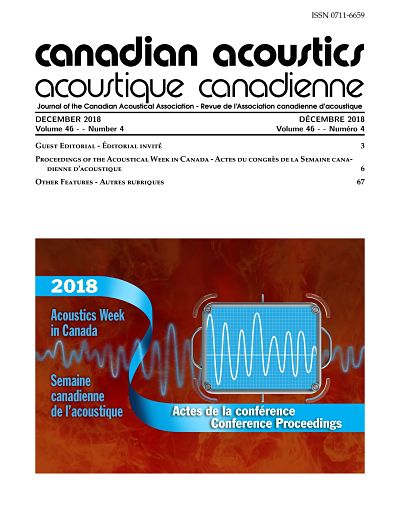Speech-Like Movements Emerge From Simulated Perioral Muscle Activation Space Without Neural Control
Keywords:
SPEECH PRODUCTION, BIOMECHANICS, MUSCLE SYNERGIES, NEURAL CONTROL, ARTISYNTH, MOTORCONTROL, SIMULATION,Abstract
Muscle synergies have been proposed as a solution to the degrees of freedom problem inherent in the biomechanics of speech production [Gick & Stavness, 2013, Front. Psych, 4, 977]. However, the majority of experiments involving the extraction of muscle synergies prove theoretically insufficient to determine whether such synergies are of neural origin or simply reflect the lower dimensionality of an under-sampled biomechanical/neural task space [Kutch & Valero-Cuevas, 2012, PLoS computational biology, 8(5), e1002434]. Therefore, to what extent biomechanics of the human vocal tract may constrain the “ecological state space” of a speaker during locution remains uninvestigated. As a proof of concept, we created a simplified version of the peri-oral region using FEM modeling in a physics-based simulator (ArtiSynth [Lloyd et al., 2012, Soft tissue biomech…surgery, pp. 355]). Systematic simulations enabled us to model the full kinematic/biomechanical space. Visualization of the resulting biomechanical state space using t-SNE [van der Maaten & Hinton, 2008, J.MLR., 9, 2579] illustrates that speech-like movements (e.g., lip rounding or spreading) emerge as self-organizing structures (muscle synergies) critically without a direct neural controller. These results are discussed in the context of current and future explorations of motor control of speech. [Funded by NSERC].
Additional Files
Published
How to Cite
Issue
Section
License
Author Licensing Addendum
This Licensing Addendum ("Addendum") is entered into between the undersigned Author(s) and Canadian Acoustics journal published by the Canadian Acoustical Association (hereinafter referred to as the "Publisher"). The Author(s) and the Publisher agree as follows:
-
Retained Rights: The Author(s) retain(s) the following rights:
- The right to reproduce, distribute, and publicly display the Work on the Author's personal website or the website of the Author's institution.
- The right to use the Work in the Author's teaching activities and presentations.
- The right to include the Work in a compilation for the Author's personal use, not for sale.
-
Grant of License: The Author(s) grant(s) to the Publisher a worldwide exclusive license to publish, reproduce, distribute, and display the Work in Canadian Acoustics and any other formats and media deemed appropriate by the Publisher.
-
Attribution: The Publisher agrees to include proper attribution to the Author(s) in all publications and reproductions of the Work.
-
No Conflict: This Addendum is intended to be in harmony with, and not in conflict with, the terms and conditions of the original agreement entered into between the Author(s) and the Publisher.
-
Copyright Clause: Copyright on articles is held by the Author(s). The corresponding Author has the right to grant on behalf of all Authors and does grant on behalf of all Authors, a worldwide exclusive license to the Publisher and its licensees in perpetuity, in all forms, formats, and media (whether known now or created in the future), including but not limited to the rights to publish, reproduce, distribute, display, store, translate, create adaptations, reprints, include within collections, and create summaries, extracts, and/or abstracts of the Contribution.


